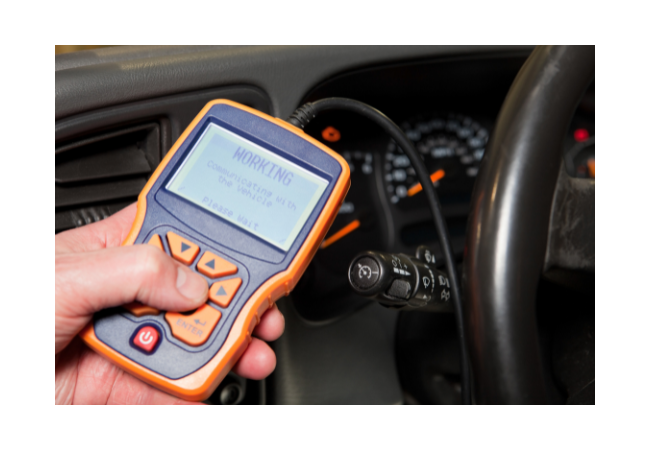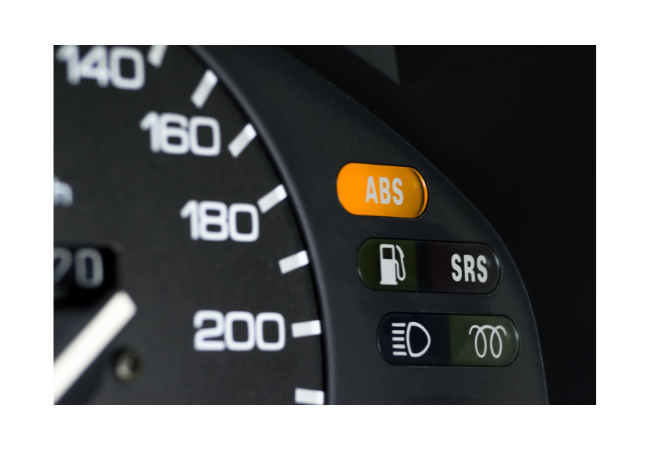Are you tired of dealing with the pesky ABS light in your Dodge Ram 2500? This comprehensive guide on “how to reset ABS light on Dodge Ram 2500” will help you understand the importance of the ABS light, common causes for its illumination, and how to reset it. Not only will you learn the steps to identify and fix ABS-related issues, but we’ll also provide valuable tips to prevent future problems. Buckle up, and let’s dive into the world of ABS maintenance!
Contents
Key Takeaways
- Understanding the ABS light in Dodge Ram 2500 is essential for vehicle safety and control.
- Resetting the ABS Light can be done with an OBDII scanner or by disconnecting battery terminals, while common issues such as wheel speed sensor problems, low brake fluid levels or hydraulic pressure should be addressed accordingly.
- Regular inspection and maintenance of braking system components along with tire pressure monitoring are recommended to prevent future ABS light issues. Professional assistance should be sought if necessary.
Understanding the ABS Light in Dodge Ram 2500

The ABS light in your Dodge Ram 2500 is a vital component of your braking system, ensuring its safety and functionality. When illuminated, it indicates a problem with the Anti-lock Braking System, which helps prevent wheel lockup during sudden braking. It’s essential to address any issues with the brake light as well, to maintain overall safety.
Addressing the root cause of the ABS light illumination is a priority, as simply resetting it might not fully resolve the problem.
Anti-lock Braking System (ABS)
The Anti-lock Braking System or ABS is designed to prevent wheel lockup during sudden braking, maintaining vehicle control and stability. It does so by:
- Monitoring the rotational speed of each wheel using wheel speed sensors, including the rear speed sensor and the ABS sensor
- Preventing wheel lockup
- Ensuring that your vehicle remains maneuverable even under heavy braking, especially in wet or slippery conditions.
However, the new ABS pump system is not immune to malfunctions, with common issues such as:
- Wheel speed sensor problems
- Low brake fluid
- Hydraulic pressure issues
- ABS pump or control module failure
Future ABS light issues can be avoided through regular system inspections and maintenance of ABS lights.
ABS Warning Light Triggers
The ABS light in your Dodge Ram 2500 could activate for a variety of reasons. It is important to identify the cause and take corrective action to rectify the issue. Common causes include:
- Sensor problems
- Low brake fluid levels
- Malfunctioning ABS module
- Damage to the speed sensor wire or its connector
- A blown fuse or bad relay
- Dirt interfering with the dirty wheel speed sensors’ ability to send electric signals
These factors can trigger the ABS warning light.
To diagnose the cause of the ABS warning light, it’s recommended to check the brake fluid level, the ABS control module in the vehicle, and the fuse and relay box for any signs of corrosion or damage. Correctly identifying and rectifying the underlying problem is essential for the safe and efficient operation of your vehicle’s braking system.
Steps to Reset ABS Light on Dodge Ram 2500

After addressing the cause of the ABS warning light, you can proceed to reset it. There are two primary methods for resetting the ABS light: using an OBDII scanner or disconnecting the battery.
The objective of both methods is clearing the ABS error codes and restoring the truck and ABS system to its regular state of functioning properly.
OBDII Scanner Method
The OBDII scanner method is the recommended approach for resetting the ABS light in your Dodge Ram 2500. To use an OBDII scanner, simply follow these steps:
- Connect the scanner to the diagnostic link connector (DLC) port located underneath the dashboard of your vehicle.
- Turn on the ignition and wait for the scanner to power up.
- Select the ABS system from the menu options on the scanner.
- The scanner will read the diagnostic trouble codes (DTCs) from your vehicle’s onboard computer system.
- Follow the prompts on the scanner to clear the ABS codes and reset the ABS light.
Once you’ve identified the exact problems affecting your vehicle, repair them accordingly. After the repairs are completed, use the OBDII scanner to clear the ABS error codes, effectively resetting the ABS light and possibly the traction control light.
Battery Disconnect Method
The battery disconnect method is another way to reset the ABS light in your Dodge Ram 2500. To do this, follow these steps:
- Disconnect the negative battery terminal.
- Disconnect the positive terminal.
- Press the horn button a few times and activate the headlights to ensure all residual electricity is drained from the system.
Then, reconnect the battery, starting with the positive cable followed by the negative cable. Keep in mind that this method might not be as effective as using an OBDII scanner, as it may not clear all ABS error codes and may require additional troubleshooting if the ABS light remains on.
Identifying and Fixing Common ABS Issues
With an understanding of the ABS light and its reset process, we can now explore common ABS-related issues in Dodge Ram 2500 trucks and their solutions.
Identifying and rectifying these issues is vital for the proper functioning and longevity of your vehicle’s braking system, and hydraulic control unit including the brake pedal.
Wheel Speed Sensor Problems
One of the most common ABS issues in Dodge Ram 2500 trucks is malfunctioning or dirty wheel speed sensors. Symptoms of faulty wheel speed sensors include the same issues:
- An illuminated ABS light
- A grinding sound when braking
- A decrease in braking power
- Reduced fuel efficiency
To diagnose a faulty wheel speed sensor, use an OBDII scanner to check for related error codes and visually inspect the wheel hub sensor, including dirty wheel speed sensors, for any signs of damage or corrosion.
If you determine that a wheel speed sensor is faulty, replace it by removing the old sensor, cleaning the area around the faulty sensor, and installing the new sensor according to the manufacturer’s instructions. Regularly inspecting and maintaining your wheel speed sensors can help prevent future ABS light issues.
Low Brake Fluid or Hydraulic Pressure Issues
Low brake fluid levels or hydraulic pressure issues can also cause ABS light problems in your Dodge Ram 2500. Worn brake pads, worn rotors, and leaks in the system are among the most common causes of low brake fluid. When any of these occur, the fluid should be checked to make sure it’s at an appropriate level. To check and maintain proper fluid levels, inspect the brake fluid reservoir regularly and replenish the fluid as needed.
Potential hydraulic pressure issues may involve a malfunctioning master cylinder, a blocked brake line, or a defective ABS pump. Regularly inspecting your braking system components and addressing any issues can help prevent hydraulic pressure problems and keep your ABS system functioning correctly.
ABS Pump or Control Module Failure
Another common ABS issue in Dodge Ram 2500 trucks is ABS pump or ABS control module failure. Signs of a bad ABS pump or control module include a dashboard warning light, a grinding noise when applying the brakes, and a decrease in braking power.
To diagnose a faulty ABS pump or ABS control module, check the ABS system for any codes, inspect the system for any loose connections, and assess the system for any electrical issues.
If you determine that your ABS pump or ABS control module is faulty, consider replacement or repair options. A professional mechanic can help you choose the best course of action to ensure your vehicle’s ABS system remains in optimal condition.
Preventing Future ABS Light Issues

Alongside identifying and rectifying common ABS issues, implementing preventative measures can help avoid future problems. By regularly inspecting and maintaining your braking system components and monitoring your tire pressure, you can help ensure the longevity and proper functioning of your vehicle’s ABS system.
Regular Inspection and Maintenance
Regular inspection and maintenance of your braking system components is a highly effective way to prevent future ABS light issues. It’s essential to check the following regularly to ensure that your brakes are performing optimally and that your vehicle is safe to operate.
- Brake pads
- Rotors
- Calipers
- Brake fluid
In addition to inspecting your braking system components, be sure to address any issues you discover promptly. Regular maintenance can help prevent more serious issues from developing, saving you time and money in the long run.
Tire Pressure Monitoring
Another vital step in preventing future ABS light issues is maintaining appropriate tire pressure. Tire pressure plays a critical role in the successful operation of the ABS system, and insufficient tire pressure can cause the system to malfunction, resulting in the ABS light being illuminated.
To ensure that your ABS system is operating efficiently, regularly check your tire pressure and adjust it as needed. Consistent tire pressure checks can help you avoid ABS light issues and keep your vehicle’s braking system functioning correctly.
When to Seek Professional Assistance
While this guide provides valuable information to help you understand, reset, and maintain your ABS system, there are times when it’s best to consult a professional mechanic for ABS light issues. Understanding when to seek professional assistance is key to maintaining the safety and efficiency of your vehicle’s braking system.
Persistent or Recurring ABS Light
If the ABS module light remains on or keeps coming back after resetting attempts, it’s advisable to consult a professional mechanic. A skilled mechanic can use an OBD-II scanner to retrieve trouble codes and assess if a faulty control module is present, as well as diagnose and repair other ABS-related issues.
If you’re unsure about your mechanical prowess or the same problem persists after a vehicle restart, don’t hesitate to seek professional assistance. A skilled mechanic can ensure the correct and safe functioning of your ABS system.
Brake System Failure Symptoms
In some cases, ABS light issues may indicate a more serious brake system failure. Symptoms of brake system malfunction include a grinding sound when the brakes are engaged, a spongy sensation when the brakes are engaged, and a burning odor emanating from the brakes.
Experiencing any of these symptoms warrants immediate professional attention. A professional mechanic can diagnose and address the issue, preventing further damage to the brake system and potentially avoiding an accident.
Summary
In conclusion, understanding the ABS light and its role in your Dodge Ram 2500’s braking system is essential for maintaining a safe and functional vehicle. By following this step-by-step guide, you can effectively diagnose and address ABS-related issues, reset the ABS light, and implement preventative measures to avoid future problems.
Remember, your vehicle’s safety is of the utmost importance, and keeping your ABS system in optimal condition is a crucial aspect of that safety. Don’t hesitate to consult a professional mechanic when necessary, and always prioritize regular inspections and maintenance to ensure a long-lasting and reliable braking system.
Frequently Asked Questions
How do I reset my Dodge ABS?
To reset your Dodge ABS, turn the ignition switch to the “On” position and press the accelerator pedal three times quickly.
All lights should then illuminate indicating that the ABS system has been reset.
How do you clear ABS light on the dashboard?
Firstly, check your brake fluid reservoir and top up if necessary. You can also reset the ABS light using an OBD2 scanner or by disconnecting and reconnecting the battery – however, these are only temporary fixes and the light may come back on if there is an underlying issue.
Lastly, three quick presses of the gas pedal should indicate whether the ABS light is on or not.
Why is my ABS light on on my Ram 2500?
The ABS light on your Dodge Ram 2500 indicates that the Anti-Lock Braking System is not functioning properly.
A diagnostic scan and further inspection by a trusted mechanic will be able to determine the cause of the issue.
How can I prevent future ABS light issues?
Maintaining your braking system components, monitoring tire pressure, and addressing ABS-related issues quickly can help prevent future ABS light issues.
When should I seek professional assistance for ABS light issues?
If you are unsure of what to do, if the ABS light comes on while driving, or if the same issue continues after restarting your vehicle, it is best to seek professional assistance.
It is important to take the necessary steps to ensure your safety and the safety of others on the road. Professional assistance can help you diagnose and repair the issue quickly and efficiently.
